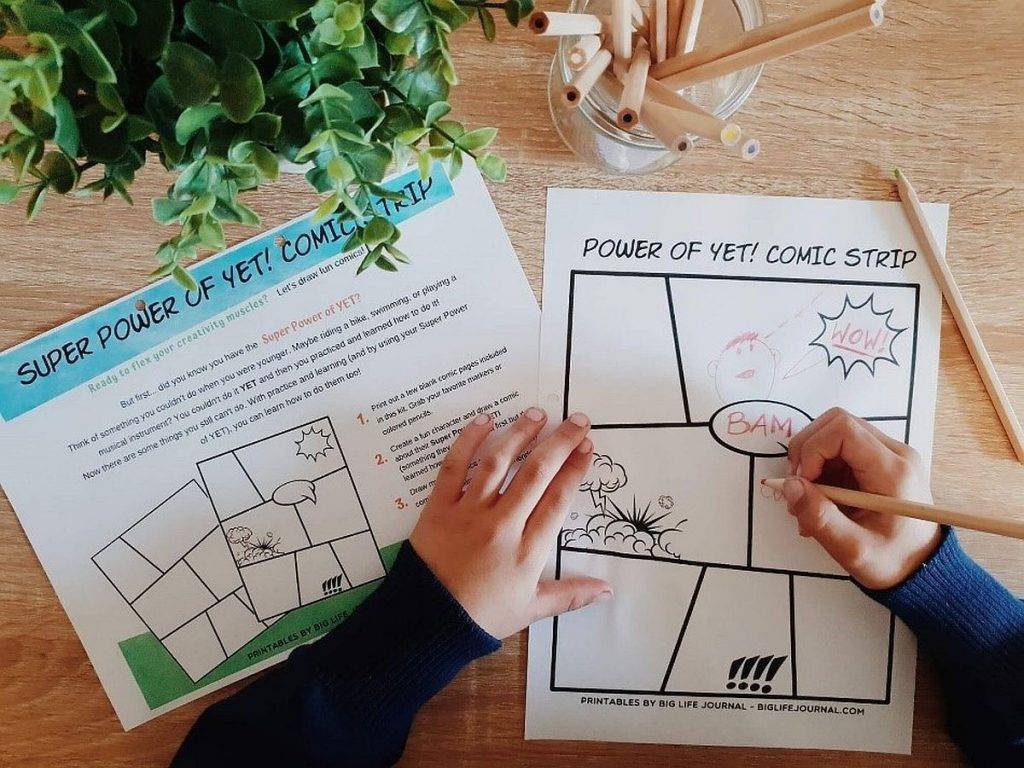A Growth Mindset Definition
With a growth mindset, you look at failure as an opportunity to learn and improve your skills rather than a method to define who you are. Everything about you, from your intellect to your abilities, has room for improvement. They don’t use words like “I can’t do it,” “I’m not good at this,” or “This is too hard.” As opposed to saying, “I may not be able to accomplish it, yet,” “This is hard, but I will try,” and “I can learn how to do this!” youngsters with a development mindset say:
As long as you have the necessary tools, these growth mindset exercises for kids can help you get started. There’s no better way to teach children about a growth mindset than via activities like these, whether they’re done at home or at school.
For Kids, here are some fun and challenging activities for a growth mindset.
Negative to Positive
This is an excellent way to introduce young children to the concepts of the growth mindset. It also teaches students how to adjust their internal voice to achieve the mental transition.
You may be surprised at how many times we tell ourselves things like, “I’m not good enough” or “I’m too.” Then, by changing the words we employ, we may give the sentence a more positive connotation.
Kids will be able to establish connections between how we talk and how we feel about ourselves if we do this with them. They should practice with the other sentences you’ve created for them.
Famous Fails
Many of our greatest achievements have been the result of our worst failures. There are many instances of this throughout our history. Finding more about these individuals and their tales of triumph over hardship may be a great source of motivation and inspiration for children. There are books about growth mindset that you may read with your children.
Look at some of history’s most infamous failures with your students (or better yet, have them undertake the study themselves). To what extent did they fail, and how did they bounce back even better to realize their aspirations and goals?
Here are a few well-known instances:
- Abraham Lincoln — as a soldier, businessman, and politician, Abraham Lincoln failed miserably. Later in life, he rose to prominence as one of the most significant presidents of the United States.
- Elvis Presley — Elvis was instantly dismissed and instructed to go work as a truck driver instead. He’s lucky he didn’t pay attention.
- Walt Disney— Walt Disney was lacking in creativity and had no original thoughts to share with the world. Because of his efforts, he would come to be known as a pioneer in the field of imagination.
Make the Mistakes Visual
Everyone in the group (or family) should grab a pen and paper and jot down an error they’ve made. Now, fold the paper in half and place it in a storage container. Get your documents out of the drawer and go through them in detail after a couple of days.
Compare your emotions at the time you made the error vs how you felt subsequently. Then, discuss how you may use the errors you made on paper to improve.
The Bottom Line
Adopting a development mindset has grown prevalent in the previous decade. Everyone from educators to companies might claim to have embraced one without knowing exactly what it entails. When we cultivate a growth mindset, we are compelled to overcome negativity and limitations. When faced with failure, it instills a sense of grit and drive, as well as a sense of optimism about the possibilities that lie ahead. For these and other reasons, instilling a development mindset in our children is one of the most important things we can do as parents.
